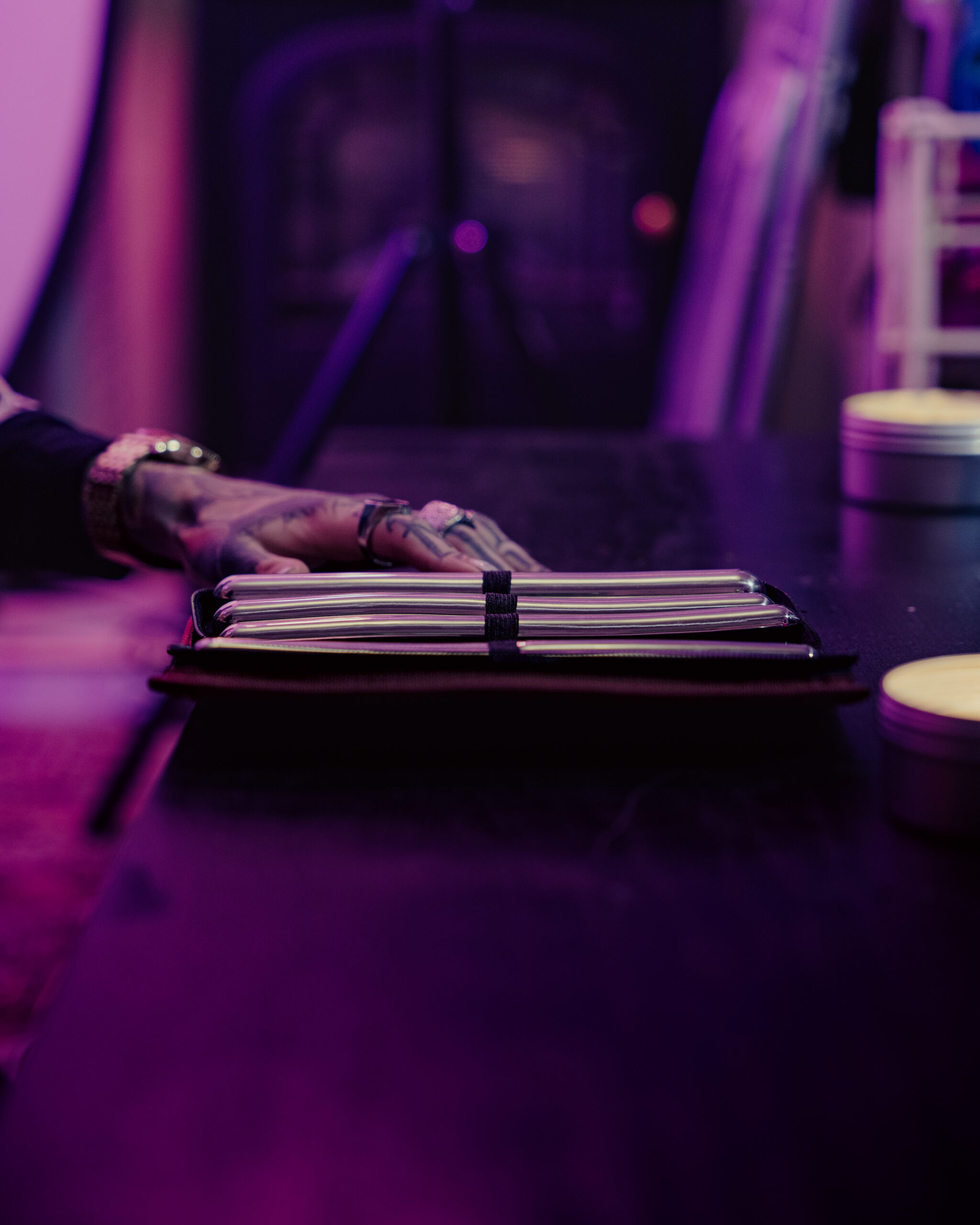Defining Pansexuality
Pansexuality is an identity that encompasses attraction to people regardless of their gender identity or expression.
It’s about recognizing that human experience extends beyond the traditional categories of male and female.
While the term “pan” can mean “all,” it’s important to note that pansexuality is not simply about being attracted to everyone.
It signifies an openness to romantic, emotional, and/or sexual connections with individuals of diverse gender identities, including but not limited to:
-
Transgender people
-
Non-binary people
-
Genderfluid people
-
Agender people
-
People of all other gender identities
In a binary world, pansexuality can be challenging to understand and embrace because societal norms often prioritize male-female relationships.
This binary thinking can lead to misunderstandings about what it means to be pansexual.
Some people might assume that pansexual individuals are “confused” or “going through a phase,” which perpetuates harmful stereotypes and reinforces the idea that gender identity is fixed and binary.
However, pansexuality is a valid and meaningful sexual orientation.
It acknowledges the complexity and fluidity of human attraction and challenges rigid societal norms.
Pansexuality is a sexual orientation characterized by romantic, sexual, or emotional attraction to people regardless of their gender identity or expression.
It’s important to understand that pansexuality is distinct from bisexuality, which often refers to attraction to two genders (typically men and women).
Pansexual individuals experience attraction that spans the entire spectrum of gender identities, including but not limited to male, female, transgender, non-binary, genderfluid, and agender.
The word “pan” comes from the Greek word for “all,” reflecting the inclusivity at the core of this orientation.
Essentially, a pansexual person might be attracted to someone who identifies as a man, a woman, or any other gender identity.
Attraction is a complex experience that exists on a spectrum.
It’s not always a simple “yes” or “no” when it comes to feeling attraction towards someone.
For some individuals, their attraction may be primarily romantic, while for others, it might be more sexual or based on a desire for emotional connection.
This spectrum of attraction can vary greatly from person to person and even change over time.
Being pansexual in a binary world can present unique challenges.
Societal norms often limit our understanding of gender and sexuality, making it difficult for some people to understand or accept pansexuality as a valid orientation.
There might be pressure to conform to traditional labels or expectations, which can be isolating and confusing.

However, the increasing visibility and acceptance of diverse sexualities offer hope for a future where pansexuality is more widely understood and celebrated.
Ultimately, understanding pansexuality requires embracing the fluidity and complexity of human experience.
Navigating a World of Labels
Navigating a world built on rigid categories can be challenging, especially when one’s identity doesn’t neatly fit within those boxes. Pansexuality, an attraction to people regardless of their gender identity or expression, often faces particular hurdles in a society that tends to define sexuality along a binary spectrum.
Understanding pansexuality requires dismantling the very concept of a binary world when it comes to gender and sexuality. The assumption that there are only two distinct genders – male and female – is a social construct, not a biological fact. Gender identity is a complex and personal experience, encompassing how someone feels inside and how they choose to express themselves.
Pansexual individuals recognize this complexity and extend their romantic and/or sexual attraction beyond the confines of gender binaries. They are attracted to people for who they are, regardless of their gender presentation or how they identify.
Here’s a breakdown of some key concepts to grasp when exploring pansexuality in a binary world:
- Gender Identity vs. Sexual Orientation: It’s crucial to distinguish between these two concepts. Gender identity is about internal sense of self, while sexual orientation refers to who a person is attracted to.
- Beyond the Binary: The binary model of gender (male/female) is limiting and doesn’t encompass the full spectrum of human experience. There are many people who identify as non-binary, transgender, genderfluid, or agender, among other identities.
- Pansexuality Encompasses All: Pansexual individuals can be attracted to people of all genders, including those who are cisgender, transgender, non-binary, and everything in between.
Navigating a world that often struggles to understand these complexities can be difficult for pansexual individuals. They may face:

- Misunderstandings and Mislabeling: People may confuse pansexuality with bisexuality or assume it’s ultra realistic dildo simply “attracted to everyone.” It’s essential to educate others about the nuances of pansexuality.
- Pressure to Conform: Society often pressures individuals to fit into predefined categories. Pansexual people may feel compelled to hide their identity or downplay their attractions due to fear of judgment or rejection.
- Lack of Representation: Limited visibility and representation of pansexual individuals in media, culture, and everyday life can contribute to feelings of isolation and invisibility.
It’s important to create a world that embraces diversity and challenges rigid gender norms. This involves:
- Educating ourselves and others about different sexual orientations and gender identities.
- Using inclusive language and respecting people’s self-identified pronouns.
- Challenging stereotypes and biases that perpetuate harm against marginalized groups.
By fostering understanding, empathy, and acceptance, we can create a more inclusive world where pansexual individuals, along with all others, can live authentically and freely express their true selves.
Navigating the world as a pansexual person in a binary world can often feel like traversing a complex labyrinth of labels, challenges, and misunderstandings.
Pansexuality, at its core, is an orientation defined by attraction to all genders, regardless of their identity or expression. This fluidity of attraction stands in stark contrast to the pervasive societal norms that rigidly categorize individuals into distinct male and female boxes.
One of the most significant challenges pansexual individuals face is the lack of widespread understanding and acceptance of their identity. The binary nature of language, ingrained from a young age, often forces people to choose between “male” and “female,” limiting their ability to comprehend or accept identities that fall outside this framework.
This limited understanding can lead to several problems:
-
Misinterpretation and Mislabeling: Pansexuality is frequently mistaken for bisexuality, leading to assumptions about an individual’s attractions based on incomplete information. This miscategorization can be frustrating and hurtful, erasing the unique essence of pansexual identity.
-
Pressure to Conform: Societal expectations often push individuals towards labeling themselves within the binary system, even if it doesn’t accurately reflect their experiences. This pressure can force pansexual people into uncomfortable or inaccurate boxes, leading to internal conflict and a sense of not belonging.
-
Isolation and Invisibility: The lack of representation of pansexuality in media, popular culture, and everyday life can lead to feelings of isolation and invisibility. Pansexual individuals may struggle to find others who understand their experiences, further amplifying the challenges they face.
Navigating these complexities requires patience, education, and open-mindedness. It’s crucial to remember that labels are tools for self-identification, not rigid definitions that confine individuals.
Encouraging open conversations about gender identity and sexual orientation, challenging binary assumptions, and creating inclusive spaces where all identities are respected are essential steps towards a world where pansexual individuals can thrive authentically.
Embracing Pansexuality
Navigating identity as a pansexual individual within a predominantly binary world can present unique challenges and rewards. Understanding pansexuality requires dismantling rigid societal norms around gender and sexuality.
At its core, pansexuality is an orientation characterized by the potential for romantic, sexual, or emotional attraction to people regardless of their gender identity or expression. It encompasses attraction to individuals who identify as men, women, transgender, non-binary, genderfluid, and all other genders.
Unlike some other orientations that may be defined by a specific gender or range of genders, pansexuality embraces the fluidity and diversity of human experience, recognizing that attraction transcends fixed categories.
Embracing Pansexuality:
1. Self-Reflection and Discovery:
The journey of self-discovery is deeply personal. Take time to explore your feelings, attractions, and desires without judgment.
2. Education and Understanding:
Learning about pansexuality and other sexual orientations can provide valuable context and insight into your own experiences. Seek out resources, engage in conversations, and challenge misconceptions.
3. Finding Your Voice:
Sharing your identity with others can be empowering, but it’s also a deeply personal decision. Take your time and come out on your own terms.
4. Building Community:
Connecting with other pansexual individuals or allies can provide support, understanding, and a sense of belonging.
Finding Community:
• Online Communities: Social media platforms, forums, and websites dedicated to LGBTQ+ issues offer spaces for connection and shared experiences.
• Local Organizations: Many cities and towns have organizations or groups that cater to pansexual and other LGBTQ+ individuals.
• Support Groups: Groups focused on specific aspects of pansexuality, such as coming out or navigating relationships, can provide tailored support.
The journey of embracing pansexuality is ongoing. It involves self-acceptance, education, connection, and advocacy. Remember that you are not alone, and there is a vibrant community of pansexual individuals who are here to support you.
Embracing pansexuality means acknowledging and celebrating attraction beyond the confines of traditional gender binaries. It’s about recognizing that human beings are diverse, with identities and expressions that exist on a spectrum.
Pansexual individuals are attracted to people regardless of their gender identity or expression. This means they might be drawn to men, women, transgender individuals, non-binary individuals, and anyone else who resonates with them on a personal level.
In a world that often tries to force people into rigid categories, pansexuality challenges these norms. It dismantles the idea that attraction is limited by gender and promotes inclusivity and acceptance of all identities.
For many pansexual individuals, it’s about seeing beyond labels and connecting with someone based on their genuine self, rather than conforming to societal expectations or stereotypes.
Celebrating diversity in language is crucial when discussing pansexuality. Using inclusive and respectful language affirms the validity of pansexual experiences and creates a space where everyone feels seen and understood.
Instead of relying on outdated terms or making assumptions, it’s important to listen to and learn from individuals who identify as pansexual. This involves using their preferred pronouns and respecting their chosen labels.
By embracing pansexuality, we move towards a more inclusive and equitable society where all individuals can express their authentic selves without fear of judgment or discrimination.
Explore every aspect here
Find everything here
- How Long After Lip Filler Can You Sunbed - August 2, 2025
- How Kratom Gummies Compare To Kratom Capsules - July 30, 2025
- How Jaw Fillers Can Reshape Weak Jawlines In Kingston Upon Thames - July 28, 2025
